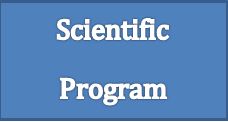Jee H. Jung
Pusan National University, South Korea
Title: Anti-inflammatory effects of a PPAR-γ agonistic phthalimide analogue
Biography
Biography: Jee H. Jung
Abstract
Previously, we isolated a new compound paecilocin A as a PPAR-γ binding molecule from the jellyfish-derived fungus Paecilomyces variotii. Based on the molecular framework of paecilocin A, a series of phthalimide analogues were synthesized and evaluated for PPAR-γ binding activity. In a subsequent screening for competitive binding activity, 4-hydroxy-2-(4-hydroxyphenethyl) isoindoline-1,3-dione (PD1) showed good PPAR-γ agonistic activity. Since one of the functions of PPAR-γ is suppression of inflammatory responses, the present study aimed to investigate anti-inflammatory activity of PD1. Transcriptions of mRNA were determined by reverse transcriptase-PCR. Inflammatory protein expressions were determined by ELISA and Western blot method. In Lipopolysaccharide (LPS)-stimulated murine macrophage RAW264.7 cells, PD1 suppressed the induction of pro-inflammatory factors including inducible Nitric Oxide Synthase (iNOS), Nitric Oxide (NO), Cyclooxygenase 2 (COX-2), Tumor Necrosis Factor α (TNF-α), interleukine 1β
(IL-1β), and interleukine 6 (IL-6) in both mRNA level and protein level. In parallel, PD1 enhanced expression of anti-inflammatory factors such as arginase-1 and interleukine 10 (IL-10). PD1 simultaneously suppressed LPS-evoked Nuclear Factor kappa B (NF-κB) p65 subunit phosphorylation in macrophages. The anti-inflammatory mechanism of PD1 is proposed to be via inhibition of NF-κB pathway. In subsequent in vivo animal experiment employing carrageenan-induced acute inflammatory paw edema model, PD1 showed significant reduction in paw swelling. Histological analysis of tissue sections revealed reduction of cellular infiltration of immune cells in PD1-treated groups. These findings suggest that PD1 may serve as an anti-inflammatory lead.

